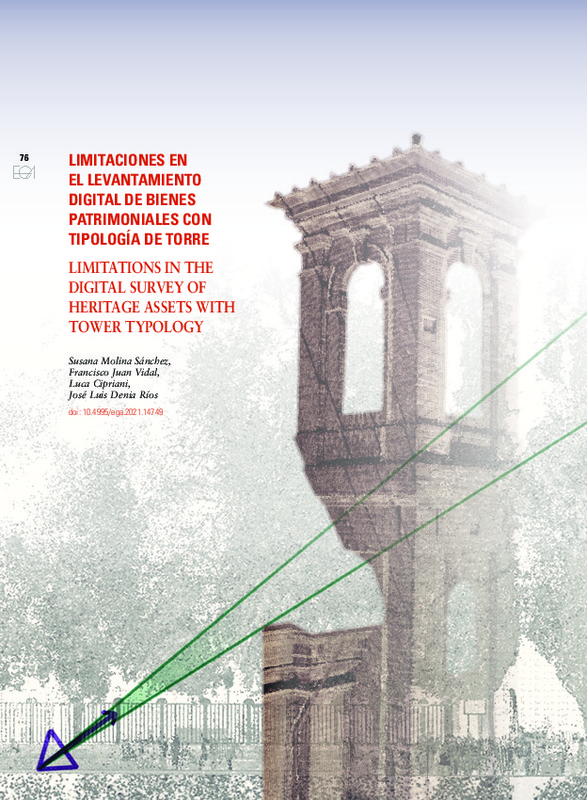|
[EN] Digital terrestrial survey techniques such as photogrammetry (SfM) and 3D laser scanning have certain limitations. These depend on the tools used, geometry, lighting conditions and distance from the element which is ...[+]
[EN] Digital terrestrial survey techniques such as photogrammetry (SfM) and 3D laser scanning have certain limitations. These depend on the tools used, geometry, lighting conditions and distance from the element which is being surveyed. Therefore, the aim of this study is to describe a method for the correct digital survey of high elements (with tower typology) when working with such restrictions, as well as to verify the relevance of its usefulness. This methodology is applied to two bell towers located in Ravenna (Italy) allowing a series of tests and reasoning on geometric accuracy and quality of the texture obtained in final models.
[-]
[ES] Las técnicas de levantamiento digital terrestres como la fotogrametría (SfM) y el láser escáner 3D (TLS) poseen ciertas limitaciones en función de las herramientas utilizadas y de la geometría, condiciones de iluminación ...[+]
[ES] Las técnicas de levantamiento digital terrestres como la fotogrametría (SfM) y el láser escáner 3D (TLS) poseen ciertas limitaciones en función de las herramientas utilizadas y de la geometría, condiciones de iluminación y distancia del elemento con el que se trabaja. Por ello, el objetivo de este estudio es describir un método para el correcto levantamiento digital de elementos altos (con tipología de torre) cuando se trabaja con dichas restricciones, así como verificar la pertinencia de su utilidad. Dicha metodología se aplica a dos torres campanario situadas en Ravenna (Italia) permitiendo realizar una serie de ensayos y razonamientos sobre la precisión y la calidad de la textura obtenida en los modelos finales.
[-]
|









